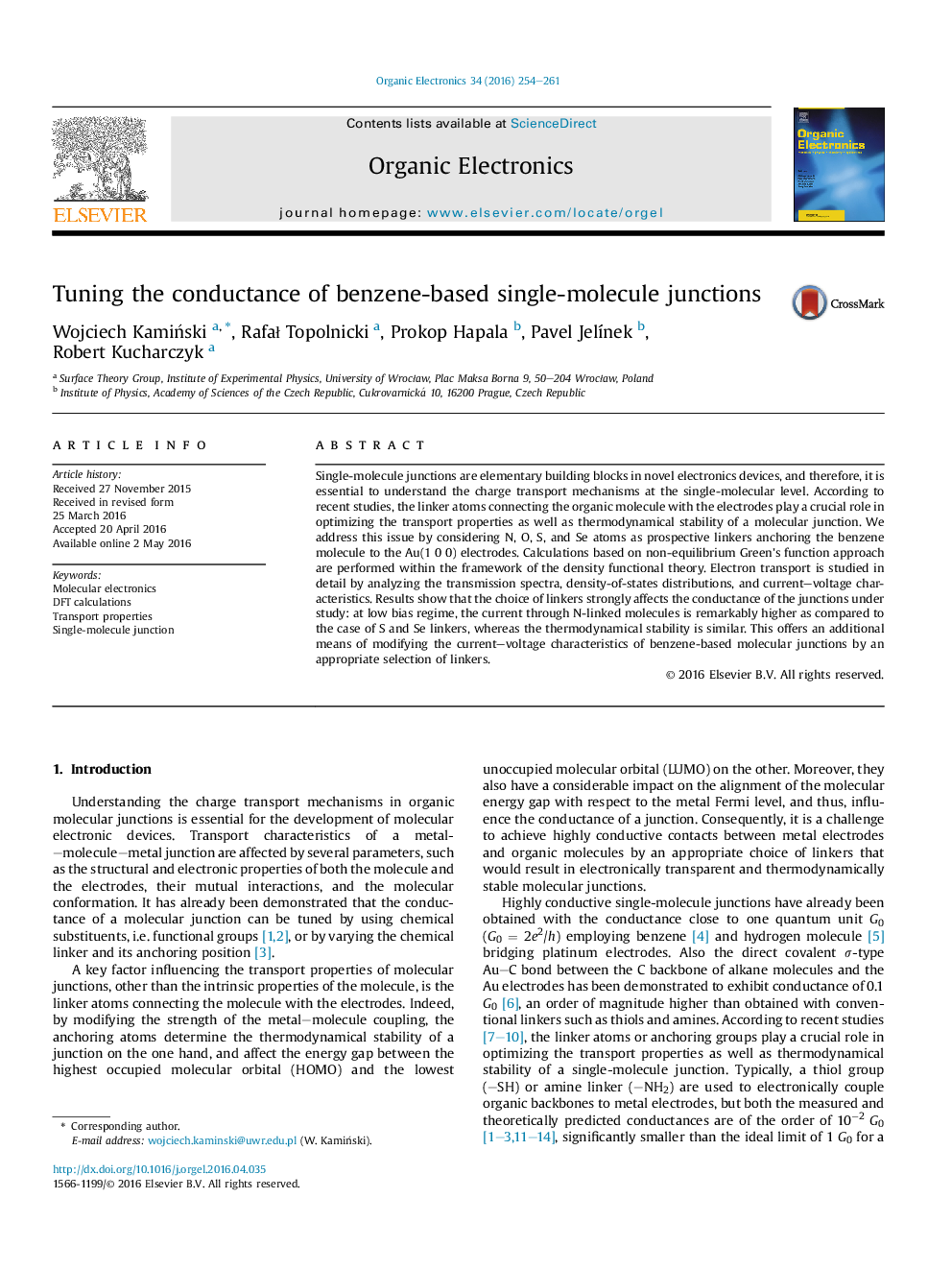| Article ID | Journal | Published Year | Pages | File Type |
|---|---|---|---|---|
| 1266926 | Organic Electronics | 2016 | 8 Pages |
•Conductance of benzene-based molecular junctions is studied within DFT+NEGF framework.•N, O, S and Se are considered as linkers anchoring benzene to Au(1 0 0) electrodes.•Choice of linkers strongly influences conductance of the considered junctions.•Linkers without hydrogen atoms give more stable and more conducting junctions.•N-linked molecule offers the most stable spectra upon varying electrode separation.
Single-molecule junctions are elementary building blocks in novel electronics devices, and therefore, it is essential to understand the charge transport mechanisms at the single-molecular level. According to recent studies, the linker atoms connecting the organic molecule with the electrodes play a crucial role in optimizing the transport properties as well as thermodynamical stability of a molecular junction. We address this issue by considering N, O, S, and Se atoms as prospective linkers anchoring the benzene molecule to the Au(1 0 0) electrodes. Calculations based on non-equilibrium Green's function approach are performed within the framework of the density functional theory. Electron transport is studied in detail by analyzing the transmission spectra, density-of-states distributions, and current–voltage characteristics. Results show that the choice of linkers strongly affects the conductance of the junctions under study: at low bias regime, the current through N-linked molecules is remarkably higher as compared to the case of S and Se linkers, whereas the thermodynamical stability is similar. This offers an additional means of modifying the current–voltage characteristics of benzene-based molecular junctions by an appropriate selection of linkers.
Graphical abstractFigure optionsDownload full-size imageDownload as PowerPoint slide
